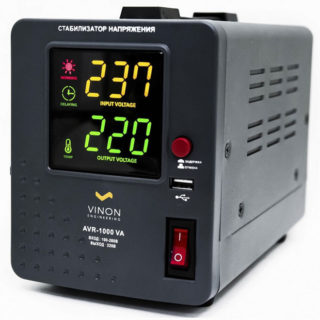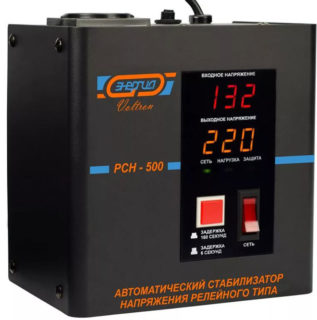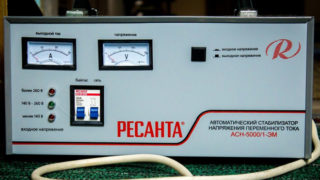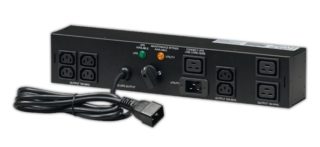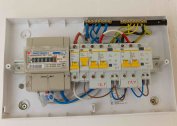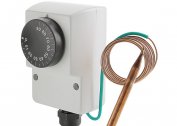Bypass is an electrical device that is part of the power source. The power in the voltage regulator can be average or high. Sometimes conditions arise when it is required to exclude this device from the electric circuit. The special bypass function will help to cope with this.
Definition and application of the bypass function in the voltage regulator
A bypass is a path created to bypass some sections or elements of an electrical circuit. The operation of an electric highway with an active workaround is called bypass mode. If this function is applied directly to voltage regulators, the input voltage is applied to the output, and stabilization is not performed. Some manufacturers of stabilizers on the cases write the word “Bypass” or “bypass”, “transit”, but the essence of this does not change.
This small electrical design is used when you need to power a load bypassing the stabilizer. Thanks to the bypass, the consumer does not need to connect wires and terminals, just switch the switch.
Situations when it is advisable to use bypass in an electrician:
- In case of emergency or emergency situations, when you need to quickly turn off the stabilizer.
- Bypass allows you to prevent overload and the development of emergency situations. Its connection to the instrument network is advisable if the output power of the stabilizer in fact exceeds the nominal values.
- If people live in a country house not all year round, but in certain seasons, they leave the minimum amount of household appliances turned on, the stabilizer turns off.
- In the dead of night, as a rule, all indicators of the electric network are stable, so there is no need for a working stabilizer.
- The need to carry out maintenance of the voltage regulator itself.
Also, the bypass function is activated when the voltage is too unstable and its indicators exceed the permissible deviations of the stabilizer operating range.
Ways to switch to bypass mode
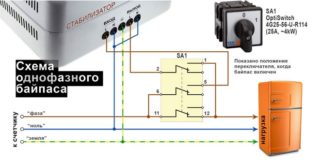 Switching the voltage regulator to bypass can be done using an internal or external switch. Each of them, in turn, is divided into electronic and mechanical.
Switching the voltage regulator to bypass can be done using an internal or external switch. Each of them, in turn, is divided into electronic and mechanical.
External structures are mounted at the request of the consumer. The operation is convenient, since by pressing a button you can completely de-energize the device and get it for maintenance or repair.
External switching is realized by three cam position switches built into the switchboard. Also, electricity regulators can be placed in special cabinets. Even at the manufacturing stage, they can be equipped with external switches of electronic or mechanical type.
The stabilizer of any type and modification can be equipped with an external switch. The main thing at the end of work is to bring it into operation of the electric power regulator.
Electronic method
Electronic switching can be done automatically and manually.
In automatic mode, electronic switching is carried out by a processor, relay or semiconductor. Automatic start bypassing the regulator can occur due to stable voltage for a long time or in critical situations.In each case, the regulator continues to analyze the magnitude of the input voltage.
To activate the manual mode, it is enough to press the button, as a result of which the electrical signal will be transmitted to semiconductors or relays. They create workarounds. To implement this method, you must be guided by the rules and regulations for the mechanical method.
Extreme situations in domestic conditions arise, as a rule, as a result of the failure of stabilizing equipment or overload of electric lines. Bypass mode will automatically turn on only if the input voltage parameters are in accordance with the standards. If at this point in time the parameters of the power supply network are unstable, the voltage regulator will simply turn off the supply of the resource. As soon as the parameters return to normal, automatic switching to the stabilizing mode will occur.
Some models of regulators can automatically transfer to bypass mode with stable supply network parameters. In such situations, voltage stabilization of the electric network is not required. After switching the equipment in real time, it monitors the parameters and stabilizes them if necessary.
The advantage of the electronic method in comparison with the mechanical one is its quick response in emergency and emergency situations. Moreover, the process does not require a person to intervene.
Mechanical way
The internal switch has the same operating principle as the external one. Switching is carried out using the handle or the toggle switch. They equip equipment with a capacity of more than 3 kV. Voltage regulators of lower power, as a rule, are made portable and equip the design with bypass sockets.
Mechanical switches in comparison with electronic versions have significant advantages - they are easy to use and more reliable. For this reason, they continue to be used in electrical circuits.
Internal and external bypass
The built-in or internal bypass is a bypass circuit, which is designed and implemented directly in the housing of an electrical device. Only the handle or the toggle switch is brought out.
Stabilizers intended for domestic use are not always equipped with a built-in electrical component, so when choosing a suitable model, you need to pay attention to this. It is not necessary to operate a bypass at home.
The external bypass is a bypass circuit designed and implemented around the voltage regulator. Each stabilizer, despite the number of phases and power, can be equipped with an external additional working unit.
Reasons for use
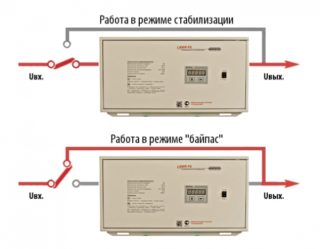 The main reasons for using the bypass are:
The main reasons for using the bypass are:
- To reduce the wear of consumables and extend the operational period.
- During construction work, as well as high dust content in the room.
- At home, regular voltage drops are observed. Deviations exceed 30-35%.
- For modernization, prevention and repair.
The bypass function is often activated by homeowners when they leave the country house for the winter. At this time, the use of a stabilizer is impractical, and bypassing will prevent the occurrence of emergency or emergency situations.
Bypass is a special function in electronic devices that commutes (connects) signals without working nodes - functional blocks. Its main tasks are to improve the quality of work of all household appliances and electrical appliances, thereby guaranteeing a long service life. Its use is effective when high voltage occurs, and also helps to save electricity.

